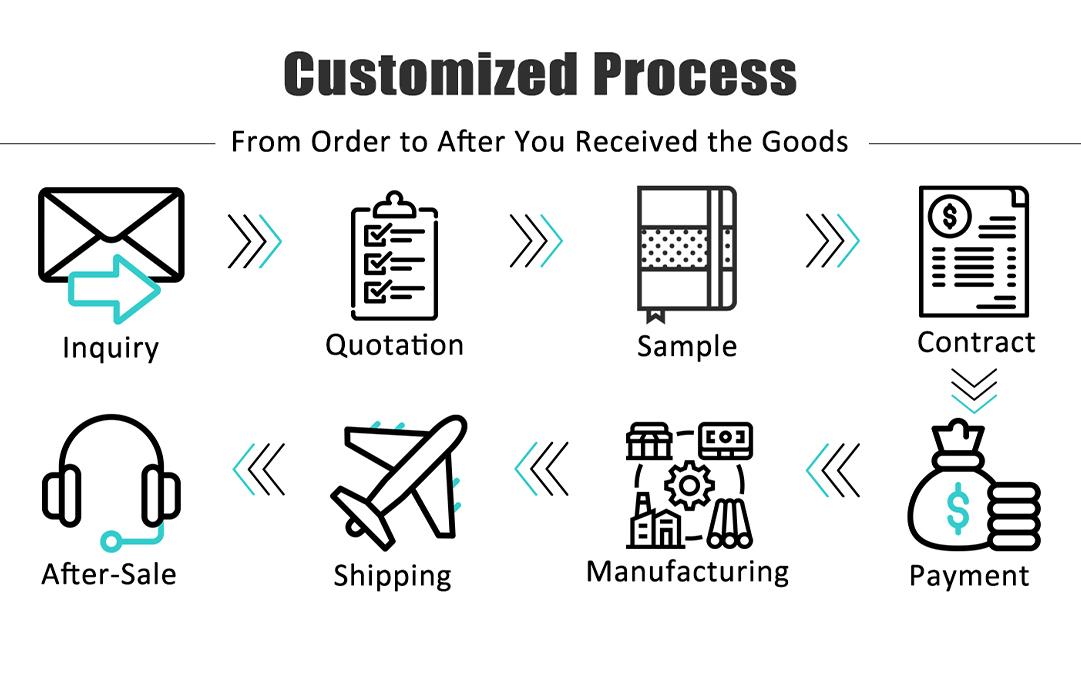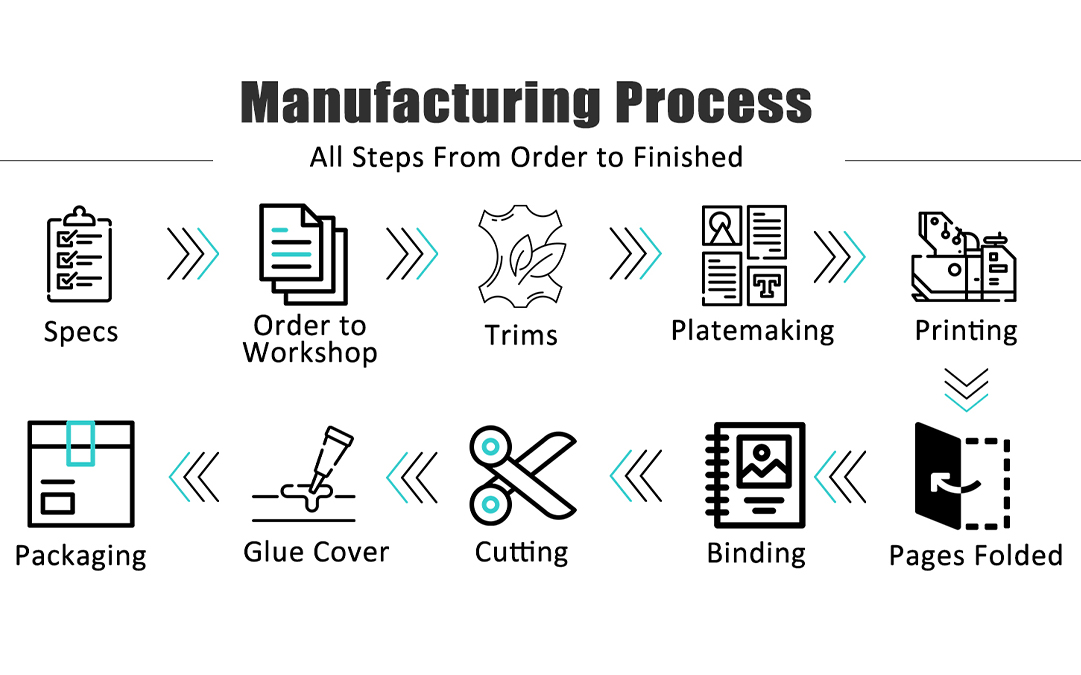How to Manage Inventory Effectively for Your Notebook Printing Business
Meta Description
Master inventory management for your notebook printing business with these expert strategies.
Introduction
Running a successful notebook printing business requires not only excellent production capabilities but also effective inventory management. Proper inventory management ensures that your business runs smoothly, meeting customer demands promptly while minimizing costs. This guide will provide you with actionable strategies to manage your inventory effectively and keep your notebook printing business thriving.
Importance of Effective Inventory Management
Effective inventory management is crucial for any notebook printing business. It helps maintain the balance between stock availability and the cost of holding inventory. By optimizing this balance, you can improve customer satisfaction, reduce storage costs, and increase your profit margins. Let’s dive into ten strategies that will help you achieve this.
1. Implement an Inventory Management System
Utilize a reliable inventory management system to track stock levels, orders, and deliveries in real-time. This system will streamline your processes and provide valuable insights into your inventory status. Consider using software tailored to the needs of custom notebook printing, which can handle various customization options and order volumes.
2. Forecast Demand Accurately
Accurate demand forecasting helps you maintain optimal inventory levels. Analyze past sales data, market trends, and seasonality to predict future demand for your custom notebooks. This way, you can avoid overstocking or understocking, ensuring you always meet customer needs without excessive inventory.
3. Categorize Your Inventory
Classify your inventory into categories based on sales volume and profitability. Focus on high-demand and high-margin products, such as personalized notebooks and custom leather notebooks. By prioritizing these items, you can allocate resources more efficiently and improve overall inventory turnover.
4. Optimize Order Quantities
Determine the optimal order quantity for your inventory. Consider factors such as lead times, order costs, and storage capacities. Ordering in bulk may reduce costs, but it can also tie up capital and storage space. Balance these considerations to find the most cost-effective order quantities for your custom notebook printing business.
5. Implement Just-in-Time (JIT) Inventory
Adopt the Just-in-Time (JIT) inventory management approach to minimize excess stock. With JIT, you order inventory only when needed for production, reducing holding costs and the risk of obsolescence. This strategy is particularly effective for custom notebook printing services where customization options vary greatly.
6. Maintain Strong Supplier Relationships
Build and maintain strong relationships with your suppliers. Reliable suppliers can provide you with consistent quality and timely deliveries, which are crucial for managing inventory effectively. Negotiate favorable terms and ensure they understand your specific needs for branded notebooks and promotional notebooks.
7. Conduct Regular Inventory Audits
Perform regular inventory audits to verify stock levels and identify discrepancies. This practice ensures that your records match the actual inventory on hand, preventing issues such as stockouts or overstocking. Use these audits to adjust your inventory management strategies as needed.
8. Utilize ABC Analysis
Apply ABC analysis to classify inventory items based on their value and usage. Focus on A-items (high value, low quantity) for stringent inventory control, B-items (moderate value, moderate quantity) for regular monitoring, and C-items (low value, high quantity) for minimal oversight. This method helps you allocate resources effectively and manage your inventory more efficiently.
9. Implement FIFO and LIFO Methods
Use the First-In-First-Out (FIFO) and Last-In-First-Out (LIFO) methods for inventory management. FIFO ensures that older stock is used first, reducing the risk of obsolescence, while LIFO can be beneficial for tax purposes in certain regions. Choose the method that best fits your business model and inventory characteristics.
10. Monitor Key Performance Indicators (KPIs)
Track key performance indicators (KPIs) such as inventory turnover rate, order accuracy, and stockout rate. These metrics provide insights into the efficiency of your inventory management processes. Regularly review these KPIs and make data-driven adjustments to improve your operations.
Related Questions and Answers
Q: How can I reduce excess inventory in my notebook printing business?
A: Implementing JIT inventory management, optimizing order quantities, and conducting regular inventory audits can help reduce excess inventory.
Q: What are the benefits of using an inventory management system?
A: An inventory management system streamlines tracking, reduces errors, and provides real-time insights, helping you maintain optimal stock levels and improve efficiency.
Q: How does accurate demand forecasting impact inventory management?
A: Accurate demand forecasting ensures you have the right amount of inventory on hand, preventing stockouts and overstocking, and improving customer satisfaction.
Table: Inventory Management Strategies
| Strategy | Description |
|---|---|
| Inventory Management System | Real-time tracking of stock levels, orders, and deliveries |
| Demand Forecasting | Predicting future demand based on sales data and trends |
| Inventory Categorization | Classifying inventory based on sales volume and profitability |
| Optimal Order Quantities | Balancing order costs and storage capacities |
| Just-in-Time Inventory | Minimizing excess stock by ordering only when needed |
| Supplier Relationships | Ensuring consistent quality and timely deliveries |
| Regular Inventory Audits | Verifying stock levels and identifying discrepancies |
| ABC Analysis | Classifying inventory items based on value and usage |
| FIFO and LIFO Methods | Managing inventory flow and tax benefits |
| Key Performance Indicators (KPIs) | Tracking metrics to improve inventory management |
Buying Guide for Custom Notebook Printing
When selecting a custom notebook printing service, consider the following factors:
- Customization Options: Look for a provider that offers a wide range of customization options, including cover materials, inner page printing, and binding methods.
- Quality: Ensure the provider uses high-quality materials and printing techniques to produce durable and visually appealing notebooks.
- Lead Times: Choose a supplier with reasonable lead times to ensure timely delivery of your orders.
- Minimum Order Quantities: Check if the provider has flexible minimum order quantities to accommodate both small and large orders.
- Pricing: Compare pricing from different providers to find a balance between cost and quality.
- Customer Service: Select a supplier with excellent customer service to address any issues promptly and effectively.
Conclusion
Effective inventory management is essential for the success of your notebook printing business. By implementing the strategies outlined in this guide, you can optimize your inventory levels, reduce costs, and improve customer satisfaction. Stay proactive, continuously monitor your processes, and make data-driven decisions to keep your business thriving in the competitive custom notebook printing industry.
By mastering these techniques, you will ensure that your notebook printing business remains efficient, profitable, and ready to meet the diverse needs of your customers.
Contact Us: Ms. Rimo Lau WhatsApp Me
Whatsapp: 0086 18336352791 – WeChat&Phone
Website: www.fullcolorprintstationery.com
E-Mail: [email protected]





